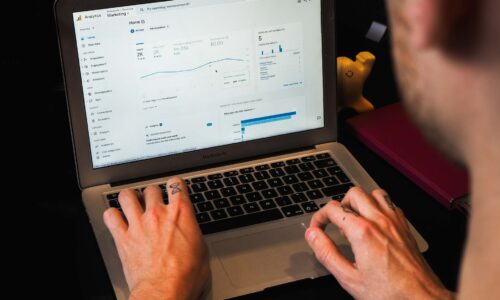Whether you’re running a blog or a sales page, Google Analytics is absolutely essential to see what your efforts are doing and what you can do to make it better. Without analytics, your business will grow in the dark. You are not convinced?
What is Google Analytics?
Here are just a few of the questions you’ll find answered with Google Analytics.
- How many people visit my website?
- Where do the users live and what devices do they use?
- Which sites are the most common redirects from?
- Which subpages are the most popular?
- How many users sign up for the newsletter or make a purchase?
How to start using Google Analytics
To create a Google Analytics account, you need a basic Google account that you use for services such as Gmail, Google Drive, Google Calendar, and YouTube. Importantly, it should be an account that only you – as the website owner – will have access to. Of course, you can share your Google Analytics account with other people as well, but you should be in full control of it. This rule applies especially to website owners who entrust SEM activities to external specialists.
After creating an account, you need to configure it. What does it mean? The point is to properly organize monitored sites. If you have one – no problem. However, if you want to monitor all your company websites, which you have, for example, 20, you need to think about the proper organization and clear nomenclature. This is important because once a configuration is established, it cannot be simply transferred to another account, keeping all historical data.
How to install the tracking code?
After completing the configuration, just click the ” Get Tracking ID button ” to – after accepting the terms of Google Analytics – receive the Google Analytics code, which should be embedded on the website in the section.
For sites built on the WordPress engine, you can use appropriate plugins, such as Google Analytics by Yoast. In that way, you can easily install the code, no matter what theme is used.
However, the installation of Google Analytics will vary depending on the platform used (i.e. a content management system such as WordPress, a website builder such as Wix.com, or e-commerce software such as Shopify). In the case of the most popular programs, however, you can easily find the appropriate instructions on the web.
After installing the tracking code, GA will be able to collect and monitor all user behavior on your pages.
How to set the right goals
Once you’ve set up your specific goals, Google Analytics will be able to track conversions and provide you with key information to help you determine your site’s performance. To put it simply, Google Analytics will know when your actions bring the desired effect, and when you need to change something to make it happen.
You can profit out of the purposes:
- standard
- non-standard
- intelligent
There can be a maximum of 20 targets that cannot be deleted but can disable them so that reports are generated.
Templates can help you set up goals that will align with your business goals. However, if they don’t reflect your organization’s goals, there’s nothing to prevent you from setting up your own custom goals that better describe the behaviors you care about the most.
When you select Smart Goals, Google Analytics will evaluate the result of each visit to your website to help you determine which visits could lead to conversion.
How to read data from Google Analytics?
There are five main categories, each with its own dashboard.
- “Audience” dashboard shows how your users are interacting with your content and who they are. You’ll know how many users and sessions your site has had, how long users stay on your site, and how many pages they typically visit.
- “Demographics” section will contain information on their age and gender.
- “Acquisition” dashboard tells you where your users are coming from.
- “Behaviour” dashboard will let you find out what I’m doing on it.
- “Conversions” – will show how users from different channels convert.
Summary:
The reports that you will receive thanks to Google Analytics will allow you to improve not only the functioning of the website but also optimize it so that it translates into the achievement of your business goals. In addition, answers to questions about users will help you better adapt your marketing activities to them, for example, select channels worth investing in and those that should be withdrawn.
Read the article on how to use Google Analytics capabilities in your e-commerce business
Author: Zofia Lipska
With over 10 years of experience in digital marketing, Sophia not only knows the rules of this industry but above all knows how to break them in order to achieve outstanding and creative results.

















